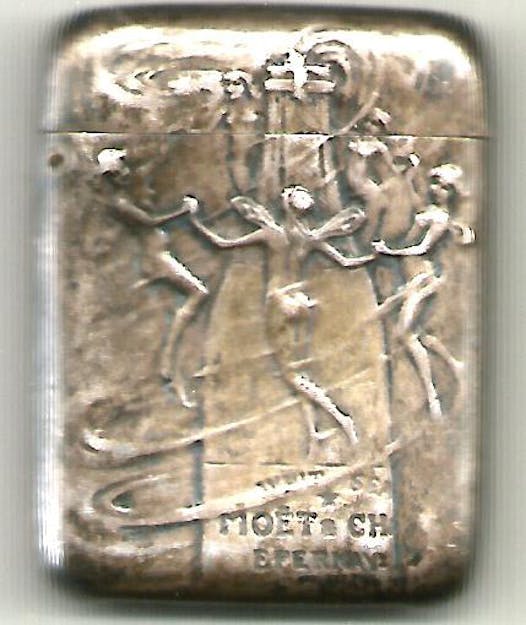Q: I am cleaning out my grandparents' estate and would appreciate your input and value on this vase. It is 9 ½ inches long and 3 ½ inches tall and marked "McCoy USA."
A: This adorable alligator planter was made by the Nelson McCoy Pottery Co. of Roseville, Ohio, circa 1950.
The company was founded as the Nelson McCoy Sanitary Stoneware Co. in 1910 by Nelson McCoy and his father J.W. McCoy. Initially they manufactured such things as churns, jars, jugs, poultry fountains, foot warmers and combinets (a handled covered pail that served the duel purposes of chamber pot and slop jar).
McCoy jugs and jars were very popular with the bootleggers of the day. The McCoy family sold its interest in McCoy Sanitary Stoneware Co. to Brush McCoy in 1925, and the new owners modernized and expanded operations.
The Great Depression hit the company hard, and in 1933, they reorganized as the Nelson McCoy Pottery Co. and started producing commercial art wares instead of the crocks and jugs, which were no longer in high demand. It closed in 1990.
Nelson McCoy Pottery pieces come in a number of shapes and styles. In planters alone it is possible to find wishing wells, roosters, ducks pulling carts, clowns, monkeys, poodles, pheasants, swans, fish, elephants, turtles, zebras, rodeo scenes, violins, carriages with umbrellas and on and on.
This McCoy planter seems to be popular with collectors, but valuing it is not an easy task. We have found similar planters priced as low as $25 to $35, but we feel that is too low. In 2017, a McCoy alligator planter sold at a New York state auction for just $30, but a year later at the same auction the piece brought $70. In the current market, we feel the latter figure is a more realistic fair market value.
Moet match safe
Q: Is this a Moet & Chandon advertising piece? The initials on the back are not those of my father, who brought it back from WWII. Any information would be appreciated.
A: Moet & Chandon is a producer of champagne in the town of Epernay, France. It is a large company in a small town (less than 25,000) that produces in excess of 25 million bottles of champagne each year.
The firm traces its history back to 1743, when wine trader Claude Moet opened Moet et Cie in Epernay and began shipping sparkling wine to Paris. It is said that Moet was the first person to produce a sparkling wine in the district.
Madame de Pompadour — Louis XV's chief mistress — is said to have been a fan of Moet's product. The company's trade name "Imperial" was chosen in honor of Napoleon Bonaparte, who was a family friend. In 1833, Pierre-Gabriel Chandon de Briailles joined the firm, making it Moet & Chandon. They merged with Hennessy Cognac in 1971 and Louis Vuitton in 1987, making the firm LVMH (or Louis Vuitton, Moet, Hennessy).
Over the years, Moet & Chandon has made a variety of champagnes with various trade names, most famously, Dom Perignon.
This is indeed an advertising match or vesta safe for Moet & Chandon's White Seal Champagne. The brand appears to have been heavily advertised in the early 20th century and perhaps a bit before. Match safes were larger than true vesta cases, with match cases being about 2 ½ inches long and vesta cases about 1 ½ inches.
A "vesta" is a wax-coated string with chemicals at the end, and vesta cases generally have a hole where the vesta can be inserted to serve as a short-lived candle. The style of decoration on this case is art nouveau. On this piece, it is characterized by the curving lines and winged fairies swirling around a recently opened bottle of Moet & Chandon's White Seal.
The work is somewhat reminiscent of Czech artist Alphonse Mucha (1860-1939), who produced advertising posters for Moet & Chandon during the last decade of the 19th century. The piece is probably circa 1900, and it is somewhat unusual. You should check around the flanges in the areas where the top and bottom sections fit together — you may find a mark for sterling silver or one for silver plate. It will make a big difference in value.
There is no question this is a rare Moet & Chandon match safe, but it has two problems. First: the initials, and second is the dented and worn condition. Still, if it is sterling silver it should be worth in the $400-$500 range — silver plate, about 40% less.
Helaine Fendelman and Joe Rosson have written a number of books on antiques.
Live video of man who set himself on fire outside court proves challenging for news organizations
4/20 grew from humble roots to marijuana's high holiday



